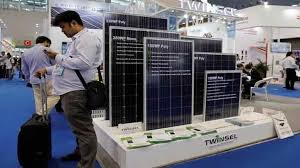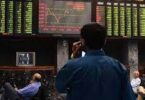LITTLETON (Reuters): China maintained its dominant grip on the export of solar panels and modules in 2023, boosting global shipments by over a third from 2022’s totals, according to data compiled by energy think tank Ember.
Total solar module exports by China, which accounts for roughly 80 per cent of global solar exports, totalled roughly 220,000 megawatts (MW) of generation capacity in 2023, up by over 55,000 MW from 2022 as global markets seeking to boost clean energy generation snapped up components.
But trade tensions with Europe over accusations that China has undercut rival producers of solar equipment led to a slight shift in the flows of module exports during 2023 as a whole.
Asian countries saw the largest increase of all regions in solar module imports from China in 2023, growing by more than European nations for the first time since 2020.
Europe remained the largest overall destination for Chinese solar modules overall, but the region’s share of total Chinese solar exports dropped to 46.35pc in 2023 from 55pc in 2022.
Asia had the second largest share, with 23pc, while Latin America and the Caribbean had the third largest share with 14pc.
Africa and the Middle East both saw sharp climbs in module import capacity from China in 2023, and both regions climbed by roughly twice the combined capacity imported by Oceania and North America last year.
COUNTRY HIGHLIGHTS
In terms of individual countries, the Netherlands remained the largest single destination for China’s solar modules for the second straight year in 2023, importing a record 47,156 megawatts.
Brazil (21,009 MW), India (14,538 MW) and Spain (12,241 MW) were other major markets.
In terms of annual growth rates, Saudi Arabia, South Africa, Malaysia and Pakistan all saw imports from China increase by well over 100% in 2023 from 2022’s totals, and all joined the ranks of major markets for China panels and modules.
Annual declines in solar imports from China were seen in Germany (-25pc), Portugal (-54pc) and Poland (-14pc) as European lawmakers cracked down on cheap renewable equipment imports from China and threatened anti-dumping proceedings.
United Arab Emirates also saw an annual contraction in module imports (-42pc) in 2023, due to the completion of major utility scale projects and the introduction of feed-in tariffs which slowed the pace of new solar farm construction.
GROWTH AREAS
Offsetting the declines seen into certain European markets were import increases into Thailand, Brazil, Mexico, South Korea and Malaysia, which look set to remain high-growth markets for renewable energy components due to escalating clean energy momentum in those countries.
Southern European nations also posted solid year-on-year gains in 2023, with Italy’s imports growing by 64pc, Turkey’s by 219pc, while Spain (+10pc) and Greece (6pc) also showed growth.
Ongoing trade disputes kept the United States a conspicuously small market for Chinese modules given the overall size of US economy, with US purchases of 563 MW of components accounting for only 0.3pc of total Chinese exports.
However, even if trade spats continue to shrink China’s share of the solar component markets in North America and Europe, fast-growing economies such as The Philippines, Vietnam, Thailand, Malaysia and South Africa look set to ensure the overall trajectory of China’s solar module exports remains higher.







